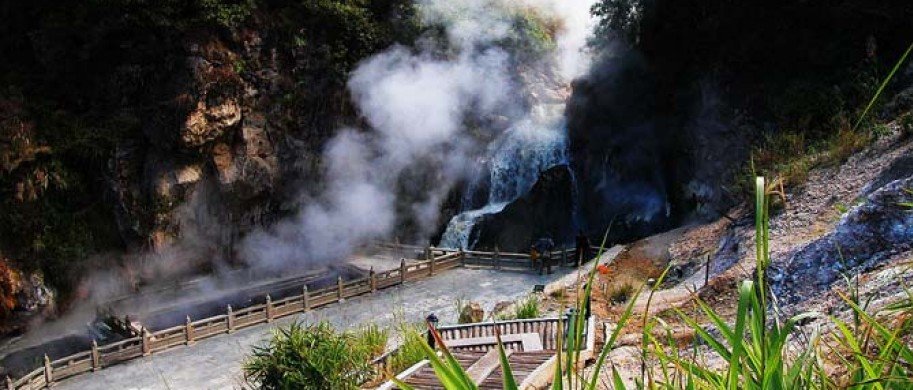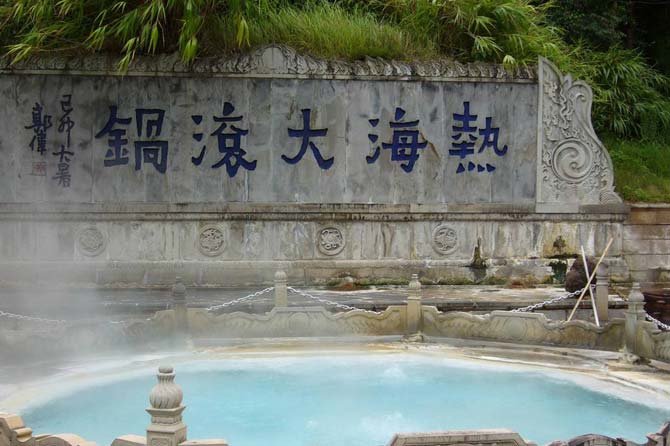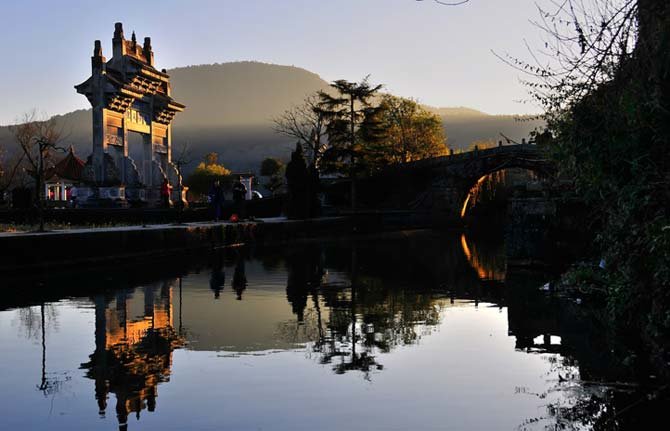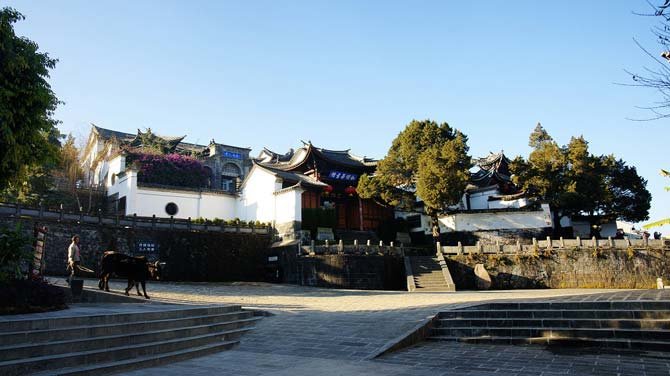
Tengchong County is situated in Baoshan Prefecture, western Yunnan Province. It is well known for its volcanic activity. The name has also been given in English language sources of the late nineteenth and early twentieth centuries as Tingyueh,Teng Yueh and Momein.

It borders with Burma in the northwest with a boundary line of 151 kilometres long. It is 750 kilometres away from the provincial capital Kunming and 160 kilometers westward from Baoshan city. Tengchong marks the southwestern terminus of the Heihe-Tengchong Line.
History
Tengchong is one of the earliest developed regions in southwest China. In the Western Han Dynasty (206 BC - AD 24), it belonged to Yizhoujun Prefecture. In the Sui (581-618) and Tang (618-907) Dynasties, a contemporary prefecture governed by a local chieftain was set up. In the Yuan Dynasty (1271–1368), Tengyue Prefecture was instituted. In the following dynasties, different administrative offices were set up. In 1913, Tengchong was made a county. In history, it occupied an important position on the Southwestern Silk Route. The Sichuan cloth and bamboo sticks available at the markets in Bactria (including Afghanistan and parts of India) were brought there from the ancient Bonan Route through Tengchong. From the Ming Dynasty on, large numbers of Tengchong people went abroad to trade and seek a livelihood.The city grew wealthy from trade with Burma and South East Asia due to its proximity to Mandalay across the Burmese border. At one point the British forces in British-occupied Burma established a trading post in the town with hopes of generating wealth through trade with China.
Geography
Situated at the southwestern end of the (transversely faulted) Hengduan Mountains, Tengchong topographically assumes the form of a horseshoe with the opening facing the south. The eastern most sources of the Irrawaddy issue from the high mountains in the is the summit of Mount Danaozi of Gaoligongshan Mountain, 3,780.2 m above sea level and the lowest point, 930 m above sea level, is in the Suqingjiang valley. The elevation of the county seat is 1,640 m.

The crustal movement in the county is active and earthquakes are frequent. The volcanoes on Dayingshan, Shitoushan, the Greater Heikongshan, the Lesser Heikongshan Mountains erupted repeatedly. The county seat is surrounded by a group of young volcanoes.
Climate
Tengchong County has a subtropical highland climate with mild conditions year-round, an annual mean temperature of 15.1 °C (59.2 °F) and rainfall of 1,530 millimetres (60 in). Snow is rare but possible in the winter.
Economy

Tengchong's industry and handicraft work were fostered during the Ming and Qing Dynasties, nearly 400 years ago. Factories and workshops were set up first by importing equipment from abroad. Earlier products included textile goods, leather, soaps, battery, cigarettes, matches, etc. They found market in West Yunnan and Burma and Southeast Asian countries. Since the founding of the People's Republic, a more complete industrial system was formed, comprising 32 departments like power generating, metallurgy, machinery, paper making, textile industry, matches production, pharmacy, tanning, chemical industry, sugar refining, tea leaves refining, food processing, etc. The major products include refined tin, pig iron, crude lead, timber, plywood, cement, refractory, diatomite filtration promoter, sulphuric acid, caustic soda, hydrochlorite potassium chlorate, calcium phdrogen phosphate, paper, canesugar, refined tea leaves, preserved fruits, edible oil, matches, Chinese medicine, etc. The matches, Chinese medicine, refined tin, refined tea leaves and the "xuanzhi" (a high quality writing paper originally produced in Xuancheng) enjoy high reputation abroad.
In agriculture, Tengchong produces grain and oil crops, tobacco, tea leaves, sugarcane, etc. The production of tobacco has a history of more than 400 years. Tengchong tobacco, cultivated on the volcanic mountain slopes is of excellent quality and therefore used as a blend. The Chuanlong tea leaves and large-sized tea leaves sell particularly well.
Tengchong is known for its jade culture and for its geothermal springs and the Lisu ethnic group. The city has actually grown into the biggest processing and trade center of jadeite in Southeast Asia. While you can find some craftsmen processing jadeite at the huge jadeite market, to get a taste of the local culture, visit the Hehua (Lotus Flower) Township near the city. At the Hehua (Lotus Flower) Township near the city there are craftsmen processing jadeite at the huge jadeite market. Du Maosheng is the chairman of the Tengchong Jewelry and Jade Association.
Natural resources
The county abounds in geothermal energy. There are over 80 steaming fountain hot streams and boiling fountains. Ten of them spout hot water of 90 C and upward. Natural resources are plentiful. The are over 2,000 higher plants. Among the economic and timber forests, there are forests of oil tea, catalpa, common China-fir, Armandi pine, walnut. The percentage of forest cover reaches 34.6% of the county. Ornamental and medicinal plants exist in great quantities. The blossoms of the rhododendrons on Gaoligongshan Mountain are exceptionally large. The Gaoligong Nature Reserve, renowned as a natural botanical garden, has over 1,400 species of higher plants, many rare and precious animals and medicinal plants. The area is the origin of R. giganteum forest at Tagg (a special rhododendron species) and Yunnan camellia.
Mineral resources include iron, tin, lead, zinc, wolfram, uranium, diatomite, rock crystal. Wollastonite, lignite, and others.
Transport
Tengchong is 760 km (470 mi) from Kunming. Bus and flights are both available to and from Yunnan's capital.
Tourism
In 2005, the county received 3.3 million tourists, with the majority of them visitors from within the province.
Various traditional villages around the town have been developed as tourist attractions. The village of Heshun features impressive architecture that was built with wealth from multi-generational trading families who sent children to Burma. A large but seasonal fresh water wetland to the north attracts bird-watchers and nature-lovers, and tourists also visit a commercially developed volcanic park to the south.
Furthermore the Tengchong National Geological Park is a great attraction and worth a visit.
Local products
The famous local products include jade articles, Chinese medicine, 'xuanzhi" paper, dried rice noodles, tea oil, small hats of split bamboo, preserved vegetables, articles of rattan work, etc.
(wikipedia)
- 2749 reads
